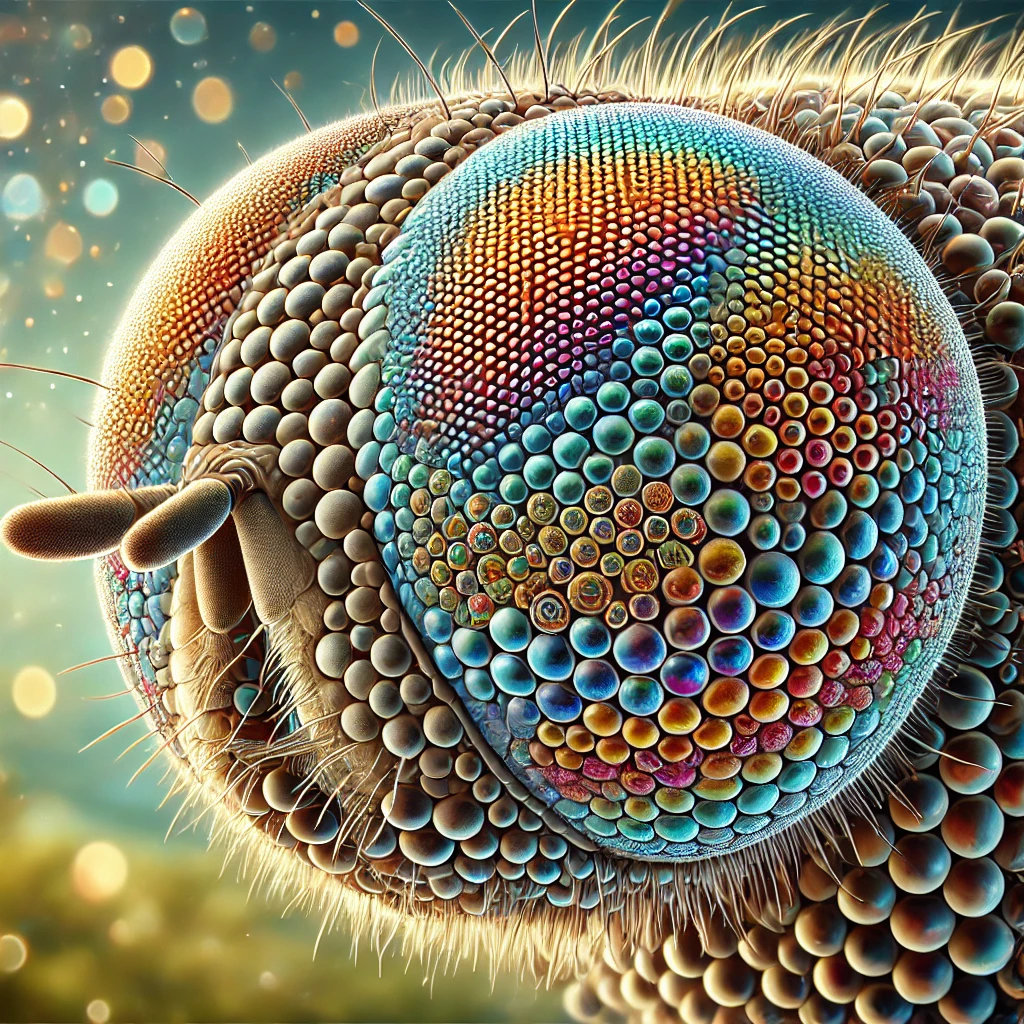
Eyes are one of the major sense organs in organisms. While vision is a common trait shared by humans and insects, the structure and functionality of their eyes differ significantly. Unlike the single-lens eyes of vertebrates, the compound eyes of insects are made up of thousands of tiny units called ommatidia. Each ommatidium functions as an individual light-sensing unit, providing the insects with complex and wide-ranging vision.
Structure of the Compound Eye
The sophisticated structure of the compound eye contains several interconnected components. The ommatidia are the building blocks of the compound eye and each of them comprises a lens, a crystalline cone, photoreceptor cells, and pigment cells. The corneal lens covers the ommatidium and focuses light onto the structure. The cone is beneath the lens to direct the light into the photoreceptor cells. The photoreceptor cells called Rhabdom are responsible for detecting light and colour. They further convert the signals into neural impulses that are then processed by the insect’s brain. Lastly, the pigment cells are sort of the preventative measures of the ommatidium. They prevent the light from scattering ensuring each ommatidium functions independently.
Functioning of Compound Eyes
The compound eye creates a mosaic-like image of the insect’s surroundings. Each ommatidium captures a small portion of the visual field while the brain stitches these individual images together. There are obvious advantages of these eyes, starting with the wide field of view. Insects can see about 360 degrees without moving their heads. Insects excel at detecting rapid movements which is very handy for either escaping predators or catching prey. This unique ability is attributed to the compound eyes. For instance, bees can perceive ultraviolet light, which helps them locate flowers and food sources. Compound eyes play a critical role in enabling UV and colour vision. That being said, this compound mosaic vision also has a few limitations. One of them being the low resolution of images. Unlike the vertebrates who have fine resolution of any object viewed, the mosaic image definitely lacks the finer details and in-depth perception.
Types of Compound Eyes
Insects have two main types of compound eyes as adapted to their lifestyles and environmental needs. Apposition Eyes are found in diurnal insects like bees and butterflies, enabling them to see sharper in the bright light. Here, each of the ommatidium functions independently. Nocturnal insects like moths have Superposition eyes that combine light from multiple ommatidia to enhance vision in low-light conditions.
Applications of Compound Eyes
Insects rely on their compound eyes for various tasks crucial to their survival. Like bees that use compound eyes to detect patterns and ultraviolet light for locating nectar-rich flowers. Dragonflies possess one of the most advanced compound eyes that help them to catch prey even in the middle of the flight with incredible precision. Butterflies use their eyes to identify mates and distinguish between plants for egg-laying.This unique yet remarkable design of compound eyes has inspired technological advancements in modern science. The most well-known adaptation is the invention of drones. The cameras in the drones mimic the compound eyes for motion detection and navigation. The wide-field imaging characteristic of the compound eyes is adapted in the surveillance and medical tools.The compound eye is a brilliant example of evolutionary ingenuity. Although compound eyes are less than vertebrate eyes, they offer several advantages including a wide field of view, superior motion detection, and adaptability to diverse environments. By mastering these features, insects have become some of the most successful creatures on Earth. The usefulness of the compound eye extends beyond the insects and serves as a source of inspiration for human innovation, bridging the gap between biology and technology.

Deeksha, is a Biochemist and an aspiring neuroscientist. Her research interest lies at the intersection of molecular neuroscience and drug discovery.

